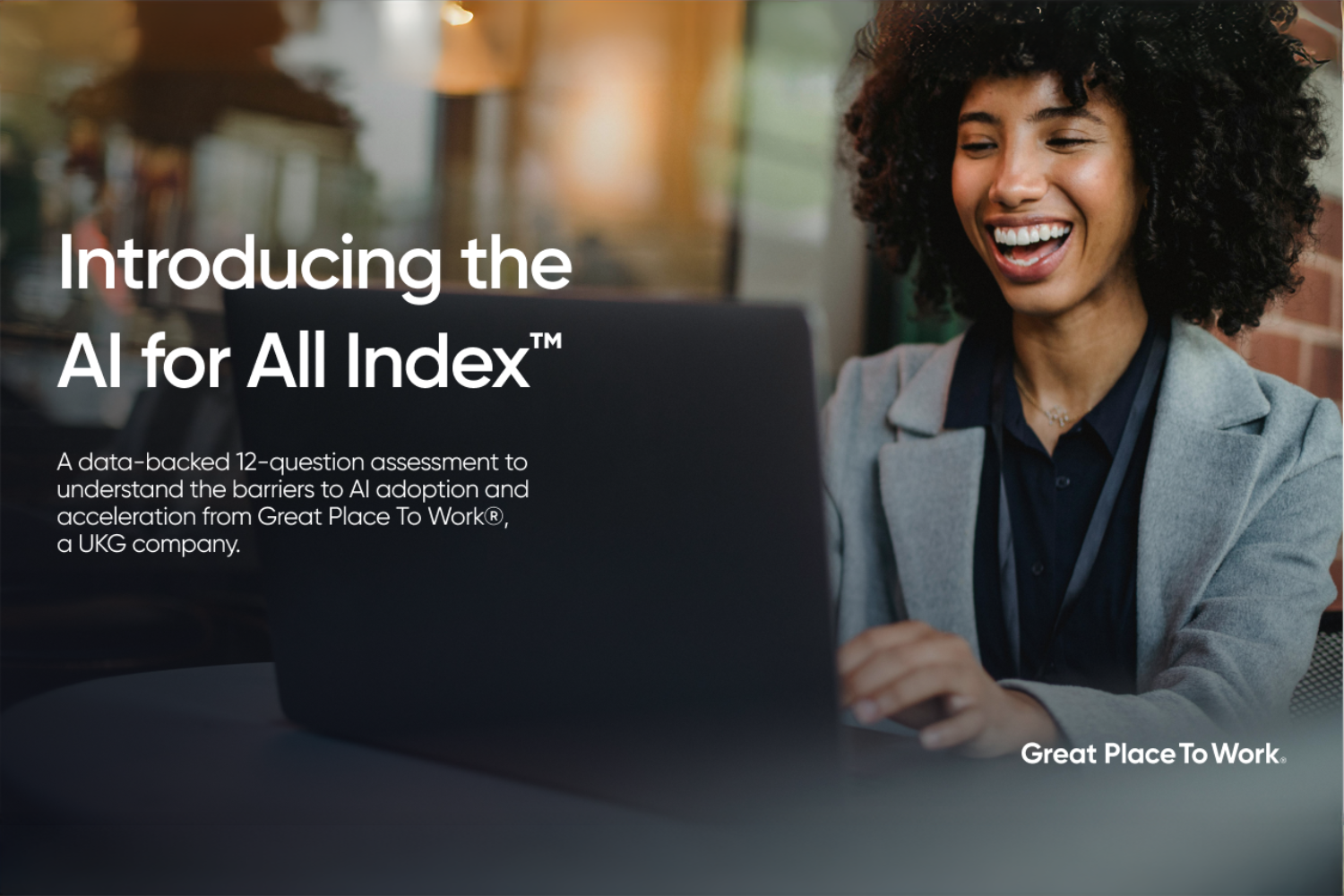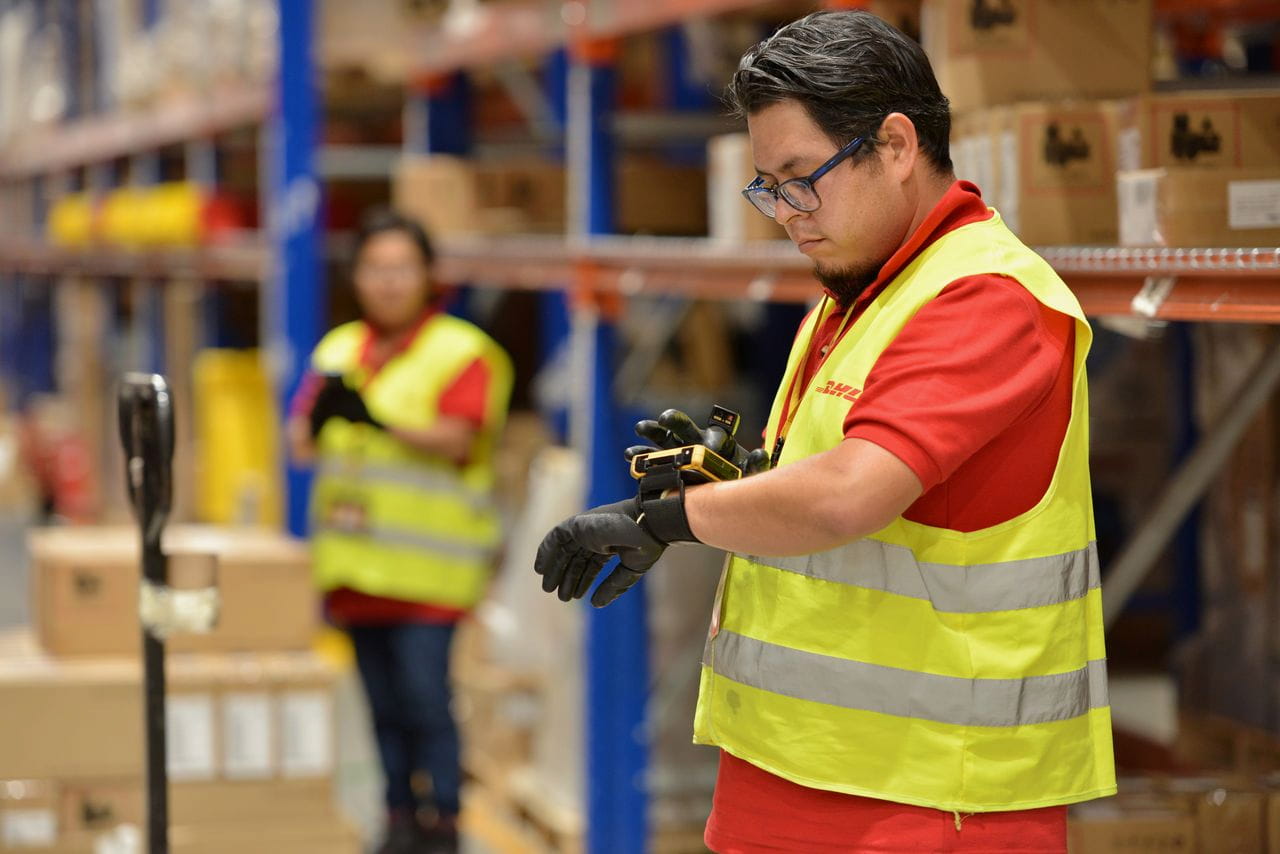AI (Artificial Intelligence), Innovation
Employees are 45% more likely to believe their company makes decisions that benefit the environment when they’re trained on the risks and benefits of using AI.
While optimists believe that artificial intelligence offers the opportunity to improve the lives of workers and build a better workplace, most workers are not so sure.
Three quarters of Americans say AI will reduce the number of jobs in the country over the next decade, per Gallup. And 77% of U.S. adults don’t trust businesses to use AI responsibly.
This is a problem for companies relying on employees to adapt quickly and develop new processes and products that unlock the potential of AI tools.
Learn strategies from other great workplaces at the For All Summit™ April 8-10 in Las Vegas!
The central question is trust: Do workers trust their employers to develop AI tools and products that benefit their careers, their families, and their communities?
“Responsibility to quell those fears sits on the shoulders of every leader,” says Michael C. Bush, CEO of Great Place To Work®. “Employees need to have confidence in their executives before they can trust their use of AI, embrace its potential, and lean in and give extra to solve complex problems.”
AI’s impact on ESG
The issue of trust runs deeper than AI success and the future of work. On multiple fronts, a lack of trust threatens all aspects of the business, including progress on environmental, social, and governance (ESG) efforts.
To meet sustainability goals, organizations need leaders who can build trust.
In a market survey of nearly 43,000 employees globally, Great Place To Work found that only 59% of employees at typical companies say their organization’s business decisions improve society and 53% say those decisions improve the environment.
Interestingly, when employees receive training on AI — learning about the benefits and risks that come with using AI tools — they are more likely to trust their company to meet ESG goals.
“What we’ve found is that as people start to play with AI and get comfortable with it, some of that fear around ‘What is this going to do for me?’ goes away." - Sam Oliver, vice president, people and communities for EMEA at Cisco
When respondents said their organization trained them on the benefits and risks of AI, they were:
- 40% more likely to say their company’s decisions benefit society
- 45% more likely to say their company’ s decisions benefit the environment
- 32% more likely to say their company’s decisions improve well-being for everyone in their community
Despite the excitement around AI, and even the rapid adoption of platforms like ChatGPT, many workers still feel that AI tools are out of reach.
Only one in three employees at a typical workplace around the world say their organization is introducing them to the benefits and risks of using AI tools, according to Great Place To Work research. Giving employees the opportunity to test and innovate with new AI technology makes a big difference.
“What we’ve found is that as people start to play with AI and get comfortable with it, some of that fear around ‘What is this going to do for me?’ goes away,” says Sam Oliver, vice president, people and communities for EMEA at Cisco, at a recent Fortune roundtable. Cisco’s entire HR team is undergoing AI training and learning how the technology might improve their work — not replace it.
Getting every employee to innovate
How can you increase the number of employees who participate in hackathons and sprints around AI? Give more employees the opportunity to innovate. The best companies have systems in place to ensure more employees can contribute ideas.
Great Place To Work research shows that when more employees participate in innovation, companies outperform their competition. Companies with higher percentages of employees getting involved with innovation have 5.5 times more revenue growth than less-innovative counterparts.
“When more employees can contribute to innovation, employees are more likely to say their work is meaningful and want to stay at their company long-term,” Bush says. Great companies are launching cross-functional teams and hosting spaces where interested employees can test the tools.
Yet, at typical companies many employees do not feel encouraged to innovate. Why might your employees decline an invitation to experiment with AI tools? Here are five common barriers:
1. A culture of fear. Employees need psychological safety to take risks and develop new skills. When they don’t feel like they can ask for support to meet basic needs, like taking a day off, they won’t feel safe to take bigger risks.
2. Unfulfilling work. When employees don’t feel connected to the mission of a company, they are less likely to feel encouraged to participate in innovation. The biggest purpose gaps are typically found between higher ranking executives and frontline employees, and great workplaces make a point to empower this overlooked demographic to drive change for the organization.
3. Running too lean. When employees can’t get funding for learning and development conferences, or if they are underpaid for the work they do, they are less likely to participate in innovation. They’re worried about their job, or juggling more than one job to make ends meet. They won’t take time to try new things or prioritize learning and growth.
4. Neglected frontline managers. For individual contributors, having a direct manager who encourages them to innovate or connect them with opportunities to take on new challenges makes all the difference. Yet, these managers are often overlooked by the organization — many report feeling overworked and underappreciated. If you want more employees to participate in innovation, you need to invest in your frontline leaders.
5. Limited development opportunities. Does every employee get training and development, or just “high achievers”? If you aren’t given the opportunity to participate in training, you are less inclined to go the extra mile to try new things. Great workplaces don’t put a ceiling on an employees’ potential, and regularly ask how they can expand access to resources for their entire workforce.
“Employees need to have confidence in their executives before they can trust their use of AI, embrace its potential, and lean in and give extra to solve complex problems.” - Michael C. Bush, CEO, Great Place To Work
Even if you can’t invite every employee to investigate the limits of AI tools at your company, simple communication around how AI is currently being used by your company could make a big difference.
Research shows that there is a big gap between what the C-suite knows about AI use in their organization and what the general workforce knows. In a survey from UKG, 78% of C-suite leaders said their organization was using AI, compared to just 42% of global employees.
That gap represents a powerful opportunity for business leaders, with data showing that educating employees about AI leads to a multitude of positive outcomes.











